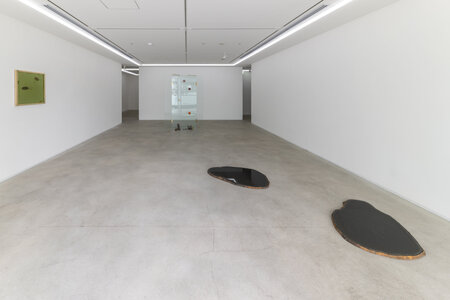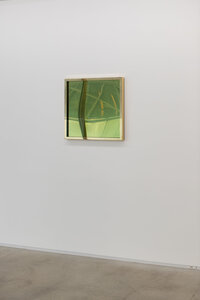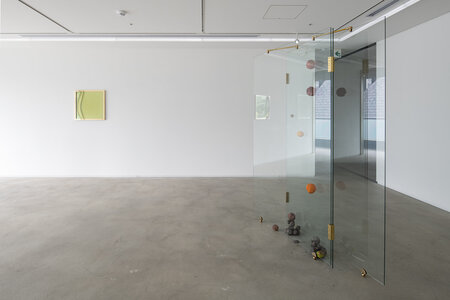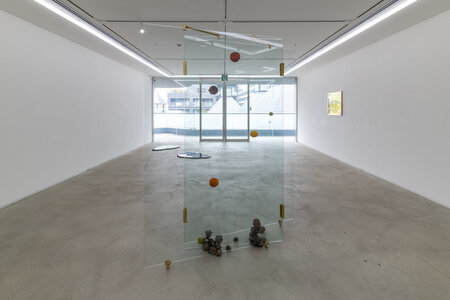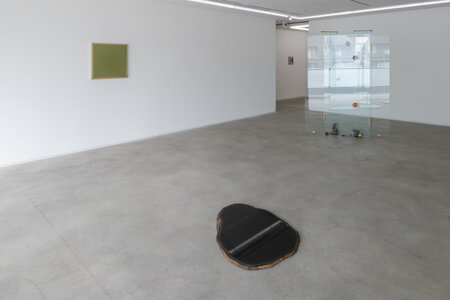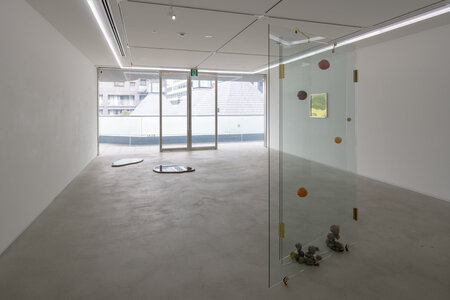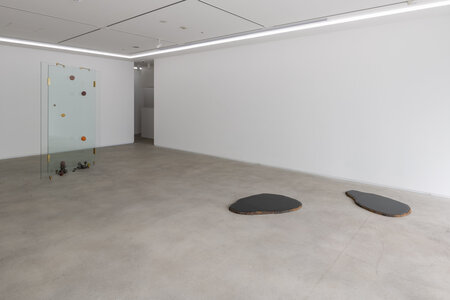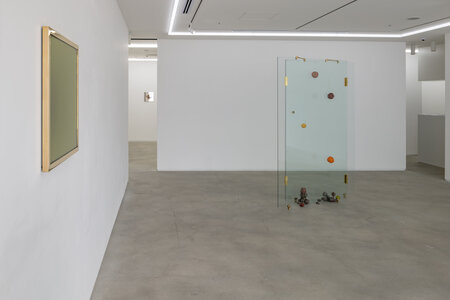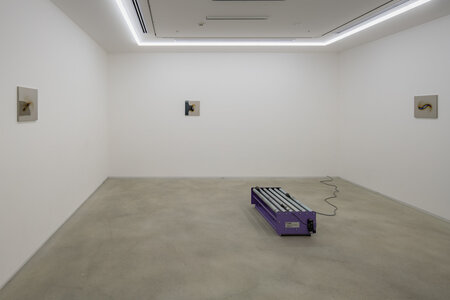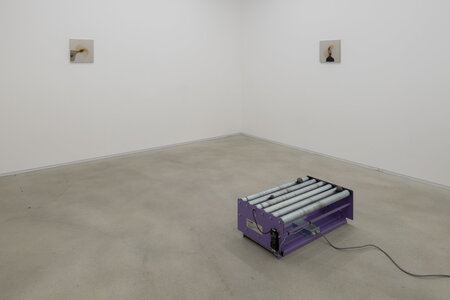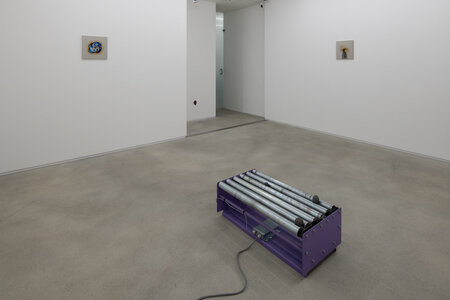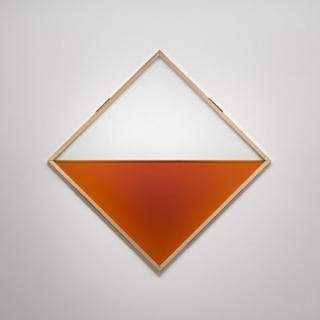Nina Canell / Reijiro Wada
42 Days
Opening hours: 12:00 - 18:00
Closed on Sun., Mon., Tues., Wed. and National Holidays
Collaborator: Mendes Wood DM, São Paulo, Brussels, Paris, New York
In their distinctive artistic languages, Nina Canell and Reijiro Wada both navigate the constant circulation of vibrant matter and their relation to environmental flows. Both of their practices depart from an expanded conception of sculpture and aim to locate biological, chemical, energetic, but also philosophical loopholes and connections. This enables the artists to consider material as dynamic and transformative, as opposed to something solely mechanical and passive.
“42 Days” is a two-artist exhibition focusing on recent sculptural work, presented in two overlapping spatial configurations. The runtime of the exhibition itself is an active component of the exhibition, inviting the durational and energetic forces embedded in both human and non-human actions to enter the space. Due to its focus on temporality, each visitor will witness what both artists have loosely described as a “passing curve”; every moment in this set-up is unrepeatable and unique, embracing the non-linear nature of intermediary states. By doing so, they are challenging the centering of visibility and permanence as ultimate currencies in experience, instead poetically speaking through the infrastructures and patterns that generate an outward appearance of stability.
The first gallery space combines examples from two bodies of works by each artist. Nina Canell’s floor sculptures Days of Inertia (2023) have been made on-site to interact with the surrounding conditions, such as the vibrancy of daylight and the conduction of distant tremors. Two slices of Japanese Daté-Kanmuri stone slabs rest directly on the floor, holding shallow bodies of water. The edges of the stones are coated with a nano-scale hydrophobic layer that not only prevents the water from spilling out onto the floor, but makes every vibration noticeable in the tension of the water’s surface. Reijiro Wada’s Still Life (2024) rather points to verticality; it consists of oblique-angled glass walls resembling a transformed triptych with fruits thrown in-between. What could be described as a panorama of suspended time is occasionally disturbed by falling decomposed fruits. Glass, together with metal, incunabula of modernism’s promise of eternal growth, comes into an immediate contact with rotten fruits as indicators for transience, but also underlying concepts of spirituality.
Other works utilize the gallery walls; Absinthe Mirror (2023) by Reijiro Wada allows visitors to see their own reflection through a greenish layer of the title’s spirit which gained a reputation for its qualities enforcing decadence and intoxication during (European) artistic modernism, while Canell’s discrete copper sculpture Bonfire (2022) spills into the space through a former electricity socket in the gallery wall. Moved by Henri Lefebvre’s notion of the city as a burning blazing bonfire, it indexes the energy flows within the gallery space as a static sculptural marker, endowing it with porosity and fluidity. Both works balance on the border of inside and outside by exploring infrastructural (Canell) and physiological-psychological (Wada) boundaries of buildings and bodies.
While the first gallery might be characterized through an atmosphere of withheld tension, the second gallery could be seen as a subtle celebration of material circulation and excess. To generate galaxy-like seemingly rotating entities with interference colors intense heat was applied to polished titanium plates from the back in four of Reijiro Wada’s Exosphere (2023) works. In the process of cooling down, thermal deformations curved them without the application of external forces. Depending on the position of the viewer these four works have an infinite amount of appearances. Expressing a vision of cosmic creation, they are resembling the moment of new life coming into existence. This ensemble is centered by a quietly roaring and grinding machine-like apparatus entitled Elsewhen (2023), a word which unexpectedly collapses space and time. The work is a continuation of Nina Canell’s ongoing interest both in minerals and the generative forces of unruliness hidden in technologies. Pebbles found on various walks are set into a constant tumble caused by the unpredictable interaction between the non-conforming irregularity of the stones and the smooth operation of the machine. At the same time, however, this machine becomes an invitation to consider the interplay of larger and smaller forces that characterize the life of every being in an expanding network of interdependency.
Their reduced and sparse artistic languages allow making connections to the liberating Minimal and Conceptual Arts practices of the 1960s and 1970s both in Japan and in the West. During these art historically and politically continental shifting periods, the limitations of endless growth and respective implications on planetary life became successively evident issues, which today have gained another urgency. Both by embracing material ecologies beyond the human scale, as exercised by Nina Canell, and pursuing the structure of space-life-time from the polarities of physics and metaphysics, as representative of Reijiro Wada’ approach, are valid artistic markers for acknowledging an awareness for process and change as ultimate paradigms for coexistence.
* "Meet Me in the Fourth Division of the Hour of the Goat" is an electrochromic window intervention that takes place every day, halfway between the opening and closing of the gallery.
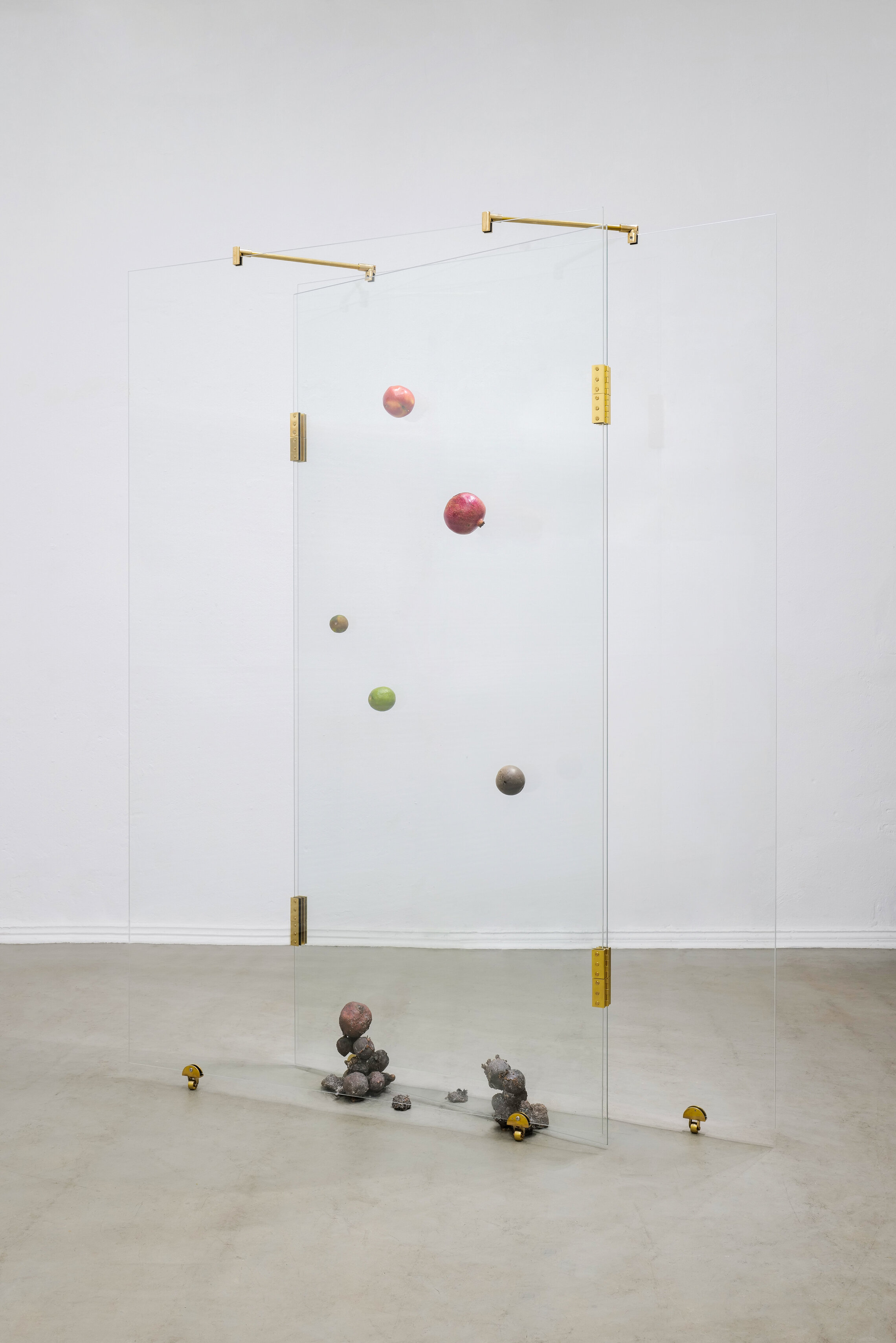
Tempered Glass, brass, bronze, fruits
h.200 x w.150 x d.30 cm
